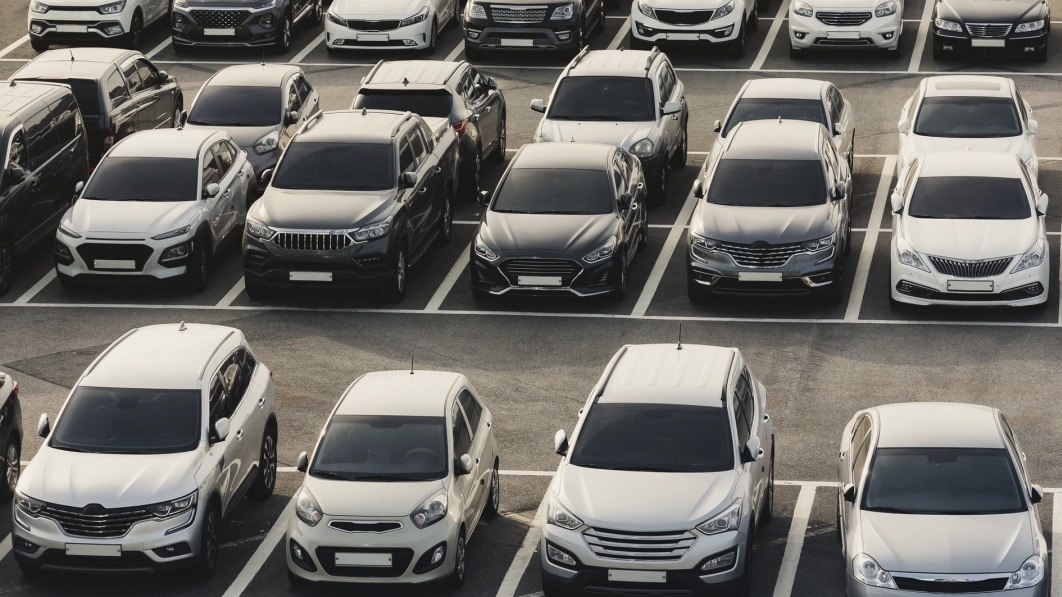
Grays of various shades — white, black and gray itself — are dominant in the automotive colors landscape now, while cars that are deemed “colorful” — blues and reds, golds and browns — continue to plummet in popularity, according to a recent data analysis by ISeeCars.com.
The upward shift in grayscale shades is fairly dramatic, with the survey showing that those innocuous colors combined now have a market share of 78.5%, compared to 60% in 2004. iSeeCars analyzed the colors of more than 20 million used cars from model years 2004 to 2023.
Among these dominant shades, gray made the biggest move up over 20 years, gaining 9.7% in market share. In the past year alone, gray gained 3.5% of market share over 2022’s numbers, even as black, white and silver lost a bit. This may be because more automakers are offering a wider variety of interesting grays.
White remains the most popular color today, gaining 12.5% of market share since 2004, followed by black, gaining 8% of the market. Silver, however, has seen a big drop in that time — losing 13.5% of the market.
Among the “rainbow” colors, the most dramatic drops were for gold, purple, brown, beige and yellow.
“Colorful cars appear to be an endangered species,” said Karl Brauer, iSeeCars executive analyst. “Despite a diverse palette being offered by automakers, there are far fewer non-grayscale cars sold today. They’ve lost half their market share over the past 20 years, and they could become even rarer in another 20 years.”
The report’s findings, he notes, lead to the regrettable conclusion — for automotive enthusiasts, at least — that today’s roads reflect “the undeniable dilution of our car color spectrum.”
While the numbers seem fairly consistent in the ISeeCars report among passenger cars, trucks and SUVs, the one exception, interestingly, comes in the sports cars segment, where owners tend to be a bit more bold and expressive in color choice and not as concerned with “playing it safe” with more neutral colors when it’s time to sell or trade their vehicles. The iSeeCars report breaks down color choices by vehicle type.
“The sports car segment managed to break the industry pattern, with grayscale colors only gaining 4.3 percent share since 2004,” said Brauer. “White more than tripled in this segment, and gray jumped by 81 percent [gain], but those gains were mostly offset by silver falling 83 percent and black losing 2.1 percent. Red also lost ground with sports car buyers, while blue and orange made substantial gains.”
Alternately, cars overall have lost appeal in the consumer market, “but they continue to serve in rental car fleets and other commercial uses,” said Brauer. “This likely explains the more than doubling of share for white in the car segment, a color popular with fleet managers due to its relatively high durability and low maintenance costs.”
Here’s a breakdown by individual colors showing market share comparisons between years:
Most popular car colors of 2023
|
Color |
2023 |
2004 |
% Change |
|
White |
24.8% |
12.3% |
101.8% |
|
Gray |
22.7% |
13.0% |
73.9% |
|
Black |
21.6% |
13.6% |
58.8% |
|
Blue |
9.9% |
11.0% |
-10.1% |
|
Silver |
9.4% |
22.9% |
-58.9% |
|
Red |
8.2% |
11.2% |
-26.4% |
|
Green |
1.2% |
3.0% |
-59.3% |
|
Orange |
1.0% |
0.6% |
61.4% |
|
Beige |
0.4% |
3.4% |
-87.8% |
|
Yellow |
0.3% |
1.0% |
-70.3% |
|
Purple |
0.2% |
0.9% |
-78.9% |
|
Brown |
0.1% |
2.6% |
-94.4% |
|
Gold |
0.1% |
4.4% |
-98.5% |
|
Grayscale Colors (White, Black, Gray, Silver) |
78.5% |
61.9% |
26.9% |
|
Non-Grayscale Colors |
21.5% |
38.1% |
-43.6% |






